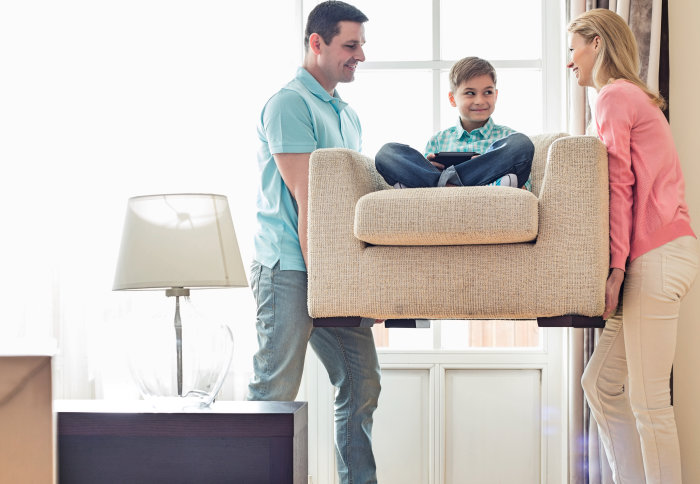The more the merrier for physical group tasks, says new study

Could more be merrier when moving furniture?
A new study has found that larger groups could be better than small groups at physical tasks when they are connected by touch.
Researchers from the Tokyo Institute of Technology, Imperial College London, and the University of Tokyo have tested coordination in groups of two, three and four humans when they communicated by touch – known as haptic communication.
The study, published in eLife, found that performance on a lab-based task improved with every additional group member up to four individuals.
In 2017, the same researchers at Imperial’s Department of Bioengineering found that humans performed better at physical tasks with a human or robot partner than alone (as seen in the below video). This suggested that people can learn to complete physical tasks to much higher standards when interacting with a partner.
In 2017, the same group of researchers at Imperial found that humans performed better at physical tasks with a human or robot partner than alone (as shown in the below video). This suggested that people can understand their partner’s control and use their movement to improve one own motion control.

This new study builds on this finding to suggest that performance increases with each additional human partner, up to four in total.
The authors say their findings could clarify how a group of people can work together using only nonverbal communication in, for example, moving a table.
Senior author Professor Etienne Burdet from Imperial said: “We expected that the performance would deteriorate with the force of each additional group member. However the performance improved with each group member, as each individual connects to a virtual collective hand which is the average of all partners’ hands - thus the 'noise' decreases with the number of partners.”
The findings could help to improve outcomes in physical rehabilitation by training patients in groups, and could even to help scientists produce an algorithm for a group of robots to carry out physical tasks together.
Team work makes the dream work
To carry out the study, the researchers tested individual unpartnered participants, 12 groups of four, 12 groups of three, and 12 groups of two.
With touch (compared to verbal communication), coordination emerges in a matter of seconds, and the time taken to reach consensus is the same, irrespective of group size. Dr Atsushi Takagi Tokyo Institute of Technology
Within each group, participants controlled a robotic joystick using their right hand, which moved a cursor on their own computer screen to follow a moving target. The same target was used for all individuals within each group.
Each individual saw, on their own monitor, the positions of the target and their hand, but not their partners’ cursor positions. Their performance on the task was measured by the average distance between their cursor and the target. In solo trials, participants followed the target alone, and in group trials, members’ right hands were joined together by elastic bands.
Participants were behind individual screens, so did not know if they were working alone or with one, two, or three partners.
They found that the tracking performance of each group improved as the group size increased. In addition, participants who performed worse to begin with improved much faster when working in larger groups than in smaller groups, but participants who performed better than their colleagues to begin with managed to sustain their superior performance - even when connected to a group of individuals with inferior performance.
Lead author Dr Atsushi Takagi from the Tokyo Institute of Technology said: “We were shocked by how well and fast partners learned to coordinate as a group through touch. Imagine trying to move a banquet table at a crowded wedding venue. With verbal communication, it’s immensely challenging to coordinate with others to ensure the table doesn’t bump against something, and the more people there are, the longer it takes to reach verbal consensus. With touch, coordination emerges in a matter of seconds, and the time taken to reach consensus is the same, irrespective of group size."
Next, the researchers will explore how groups work together outside of a laboratory setting to make their findings more applicable to real life.

The research was funded by the European Commission, the Japan Society for the Promotion of Science the Engineering and Physical Sciences Research Council, and the Japanese Sasakawa Foundation.
“Individuals physically interacting in a group rapidly coordinate their movement by estimating the collective goal” by Atsushi Takagi, Masaya Hirashima, Daichi Nozaki, Etienne Burdet, published 12 February 2019 in eLife.
This article is based on a press release from the Tokyo Institute of Technology.
Article supporters
Article text (excluding photos or graphics) © Imperial College London.
Photos and graphics subject to third party copyright used with permission or © Imperial College London.
Reporter
Caroline Brogan
Communications Division